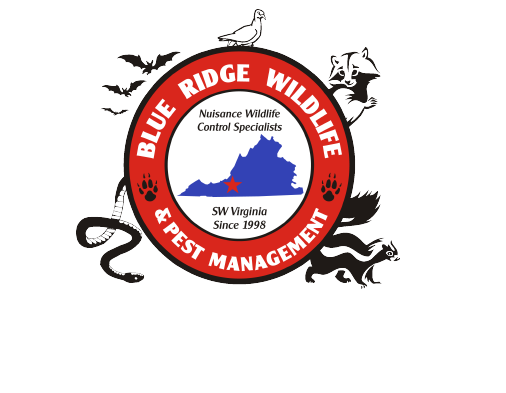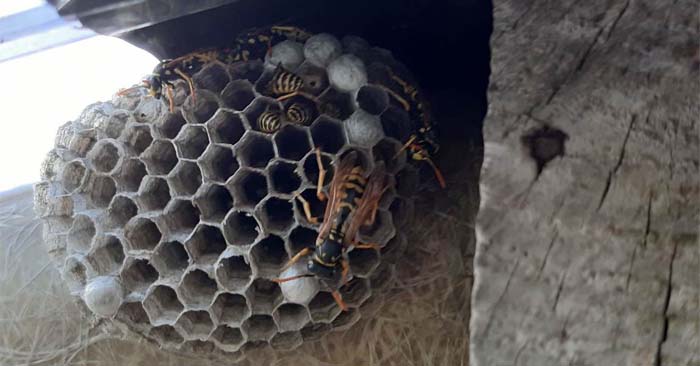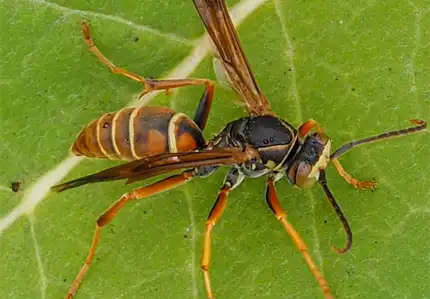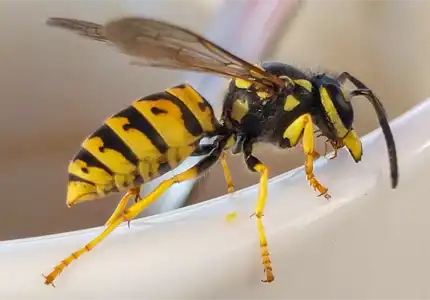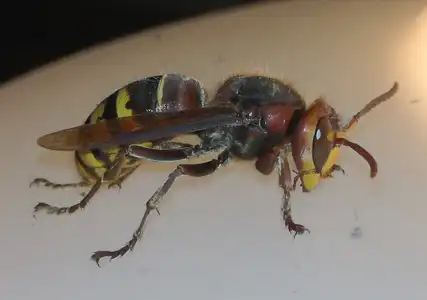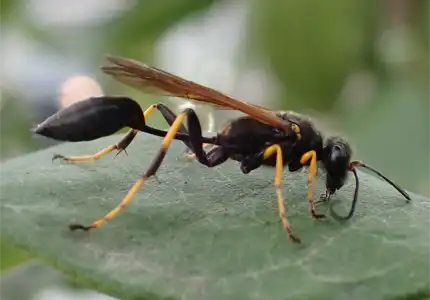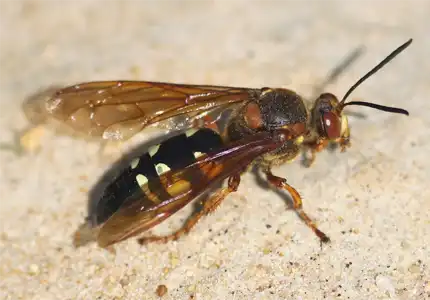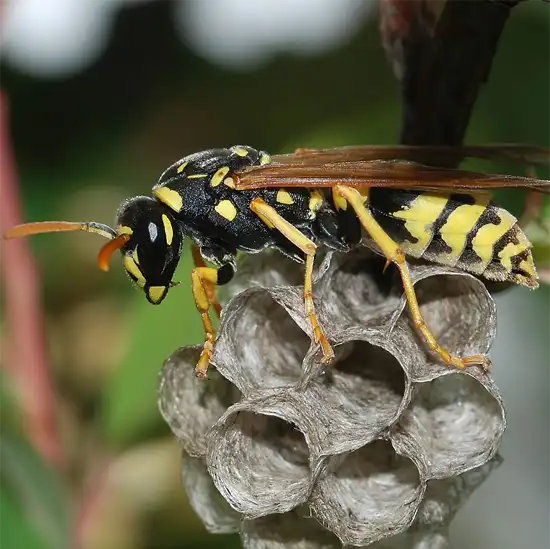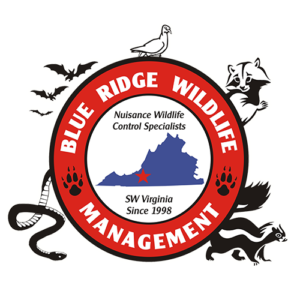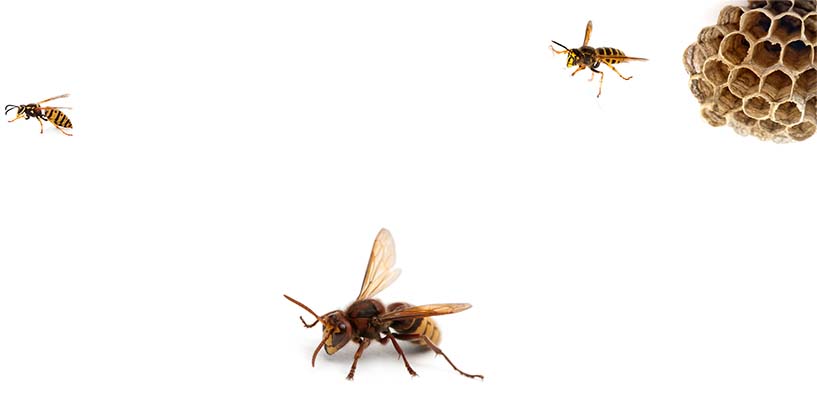
Wasps in Virginia
Wasp Life Cycle
Wasp larvae develop inside the cells of the nest, which are made of a paper-like material. The queen wasp lays eggs, which hatch into larvae after a few days. The larvae are fed by the adult wasps until they pupate and develop into adults. The adult wasps then take on various roles within the nest, depending on their age and gender.
In social wasp species, such as paper wasps, yellow jackets, and hornets, the colony is led by a dominant queen who is responsible for laying eggs. The queen also releases pheromones that control the behavior of the other wasps in the colony. Male wasps, or drones, are responsible for mating with the queen, while female wasps, or workers, are responsible for building and maintaining the nest, caring for the young, and foraging for food.
In contrast, solitary wasp species, such as mud daubers and cicada killers, do not form colonies. Instead, each female wasp constructs her own nest and cares for her own offspring.
The lifespan of a wasp can vary depending on the species and gender. Male wasps generally live for only a few weeks, while female workers can live for several months. The queen wasp can live for several years in some species.
Wasp diets can vary depending on the species, with some species being predators and others being scavengers or herbivores. The feeding habits of wasps can also change depending on the time of year and the availability of food sources.
Social wasps, such as paper wasps, yellow jackets, and hornets, are predators and feed on a variety of insects, including caterpillars, flies, and spiders. They are also known to scavenge for sugary foods, such as fruit and nectar, particularly in the late summer and early fall when these foods are abundant.
Solitary wasp species, such as mud daubers and cicada killers, are also predators, but their prey tends to be more specific. Mud daubers, for example, feed exclusively on spiders, while cicada killers feed on cicadas.
The feeding habits of wasps can also have an impact on their behavior. For example, social wasps that are scavenging for sugary foods are more likely to be attracted to human food sources, such as sugary drinks and desserts. This can lead to wasp infestations in outdoor eating areas and around garbage cans.
Overall, understanding the diet and feeding habits of wasps can help homeowners identify potential food sources that may be attracting wasps to their property. By removing or limiting access to these food sources, homeowners can reduce the likelihood of a wasp infestation.
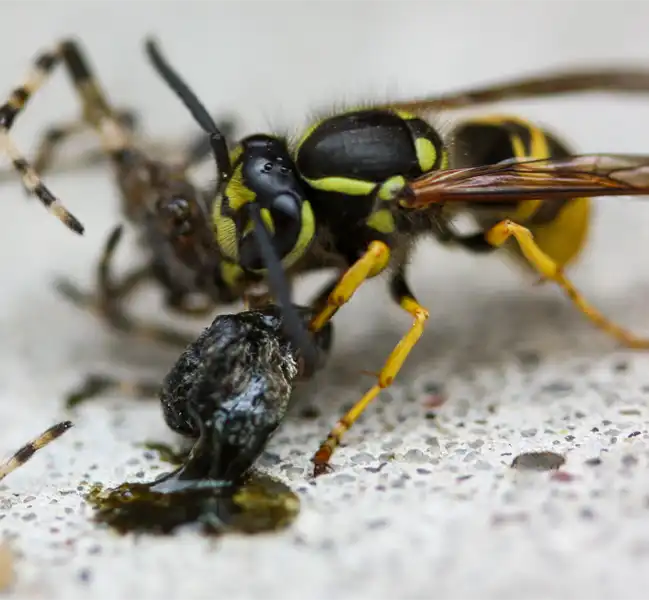
Do You Have a Wasp Problem?
Learn more about our Wasp Removal Program or call us at (540) 776-1769
